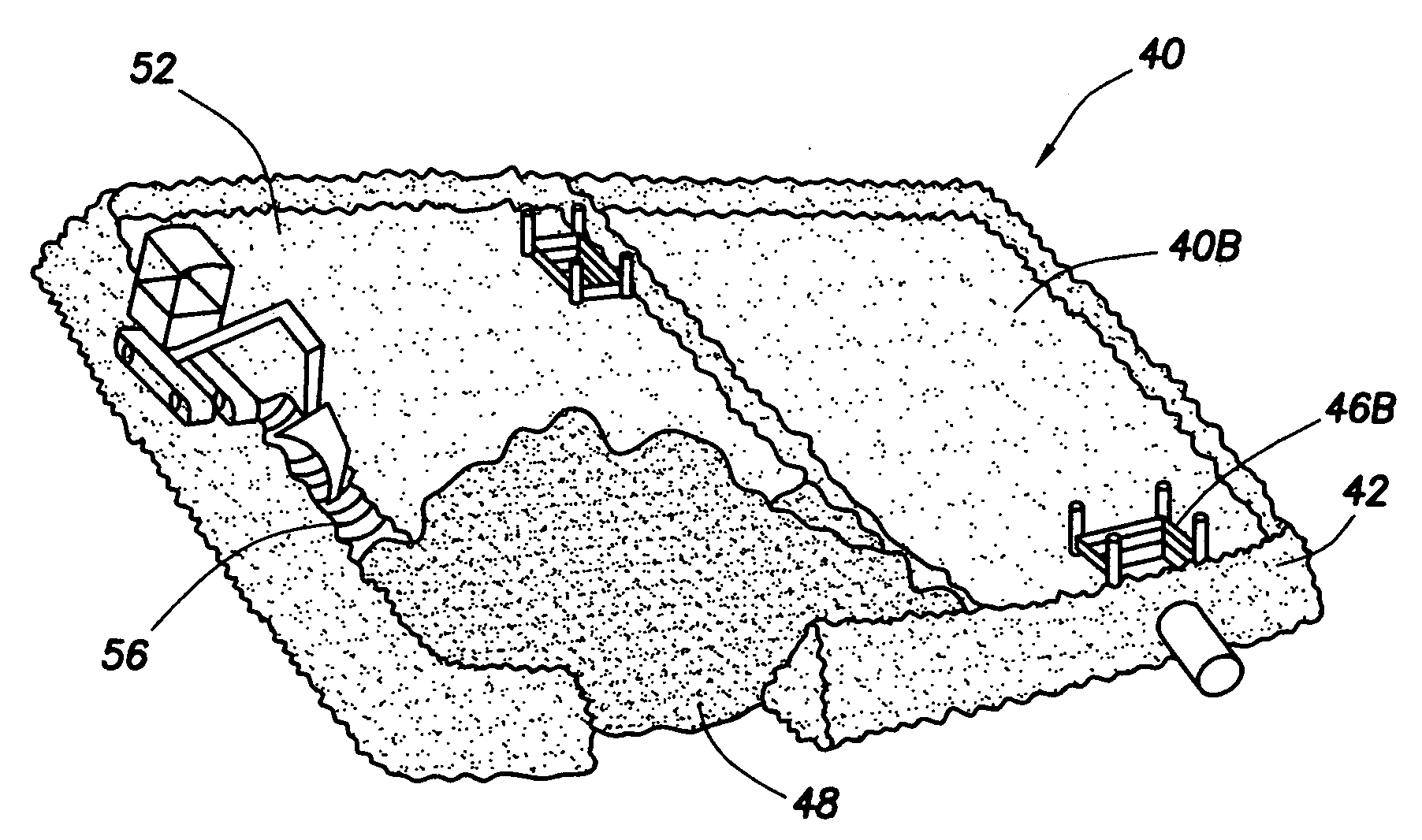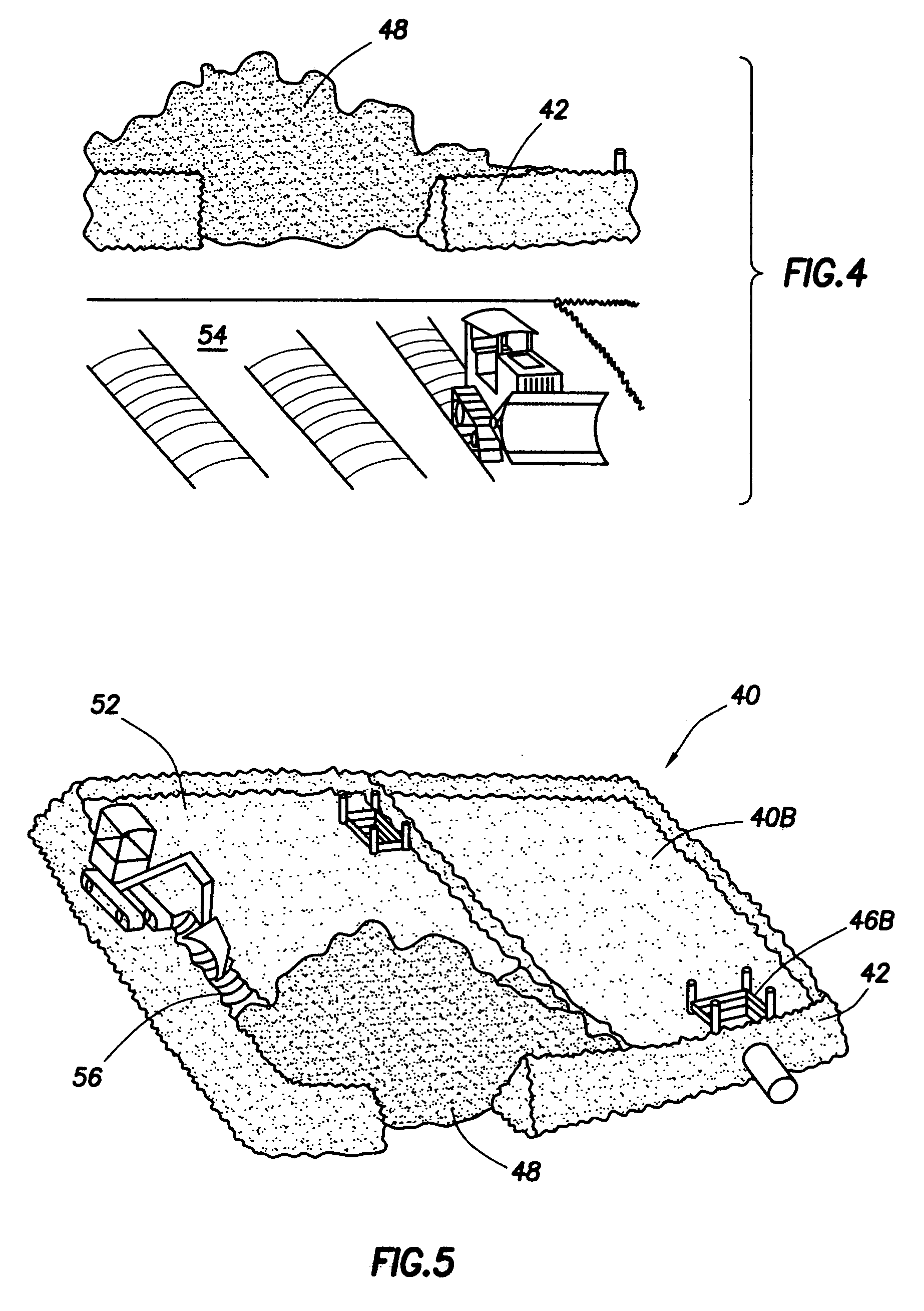Method for reclaiming hydraulically dredged material
- Summary
- Abstract
- Description
- Claims
- Application Information
AI Technical Summary
Benefits of technology
Problems solved by technology
Method used
Image
Examples
first embodiment
[0020]By contrast, the method of the present invention comprises a series of steps illustrated schematically beginning in FIG. 2. In a first embodiment, the method of the present invention involves the construction of a dredge reclamation area (DRA) 40 on land that is preferably adjacent the channel or waterway to be dredged by enclosing the area 40 by earthen berms 42, the size of DRA 40 being a function of the volume of dredged material to be reclaimed. Training dikes 44 and weirs 46 are built inside DRA 40 to separate DRA 40 into a material holding area 40A from which water escapes while retaining clays and silts pumped into DRA 40 into a clarifying pond 40B, and those skilled in the art will recognize that more than one such dike 44 and two such weirs 46 may be built to separate DRA 40 into multiple holding areas and clarifying ponds as may be required or advantageous depending upon local conditions. The subgrade on which DRA 40 is constructed is graded so that water flows towar...
second embodiment
[0022]In a second embodiment, the method of the present invention comprises the following steps. As shown in FIG. 2, a DRA 40 is constructed by earthen berms 42. A series of training dikes 44 and weirs 46 are constructed in DRA 40 as shown in FIG. 3. As shown in FIG. 8, a drainage swale 62 is then excavated around the perimeter of the wet, silty material 52 in the material holding area 40A of DRA 40 to allow water to drain into the clarifying pond 40B through weir 46A and then out of DRA 40 through weir 46B. As silts 52 are draining, the clay mounds 48 are graded and relatively dry material is windrowed on top as shown at reference numeral 64 in FIG. 9. Windrowing is then repeated with a combination of drying weather and mechanical and / or chemical manipulation for the entire clay mound 58.
[0023]Referring now to FIG. 10, a portion 66 of the graded clay mound area 58 is then excavated down to natural subgrade 68. The natural subgrade 68 is then proof rolled and the dried windrowed cla...
PUM
 Login to View More
Login to View More Abstract
Description
Claims
Application Information
 Login to View More
Login to View More - R&D
- Intellectual Property
- Life Sciences
- Materials
- Tech Scout
- Unparalleled Data Quality
- Higher Quality Content
- 60% Fewer Hallucinations
Browse by: Latest US Patents, China's latest patents, Technical Efficacy Thesaurus, Application Domain, Technology Topic, Popular Technical Reports.
© 2025 PatSnap. All rights reserved.Legal|Privacy policy|Modern Slavery Act Transparency Statement|Sitemap|About US| Contact US: help@patsnap.com



